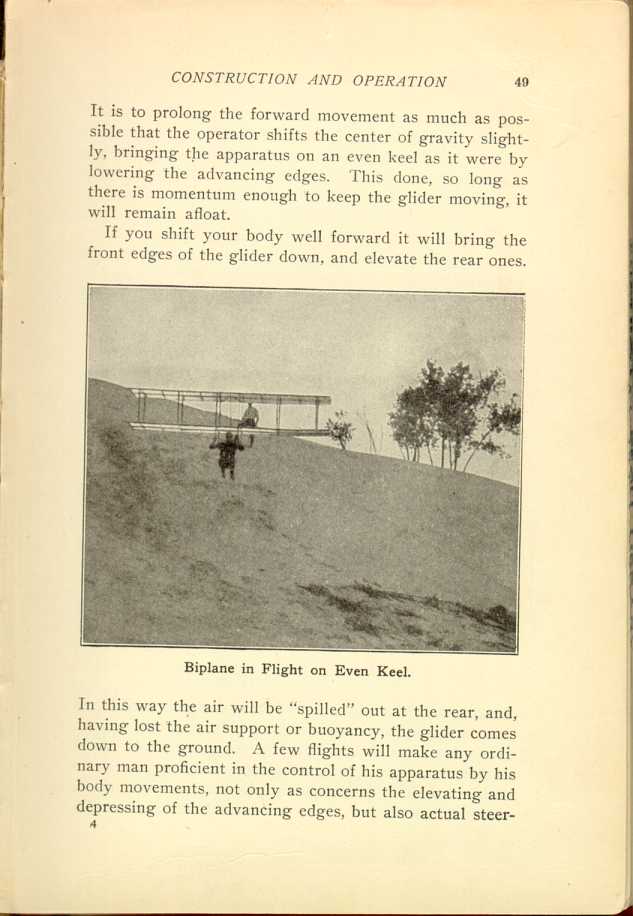| CHAPTER VI.
LEARNING TO FLY. Flying Machines: Construction and Operation: A Practical Book Which Shows, in Illustrations, Working Plans and Text, How to Build and Navigate the Modern Airship. | ||
Effect of Body Movements.
When the weight of the body is slightly back of the center of gravity the edges of the advancing planes are tilted slightly upward. The glider in this position acts as a scoop, taking in the air which, in turn, lifts it off the ground. When a certain altitude is reached—this varies with the force of the wind—the tendency to a forward movement is lost and the glider comes to the ground.
If you shift your body well forward it will bring the front edges
of the glider down, and elevate the rear ones.

Biplane in Flight on Even Keel.
[Description: Black and white photograph: Man in biplane glider in flight,
with hill in background.]
| CHAPTER VI.
LEARNING TO FLY. Flying Machines: Construction and Operation: A Practical Book Which Shows, in Illustrations, Working Plans and Text, How to Build and Navigate the Modern Airship. | ||